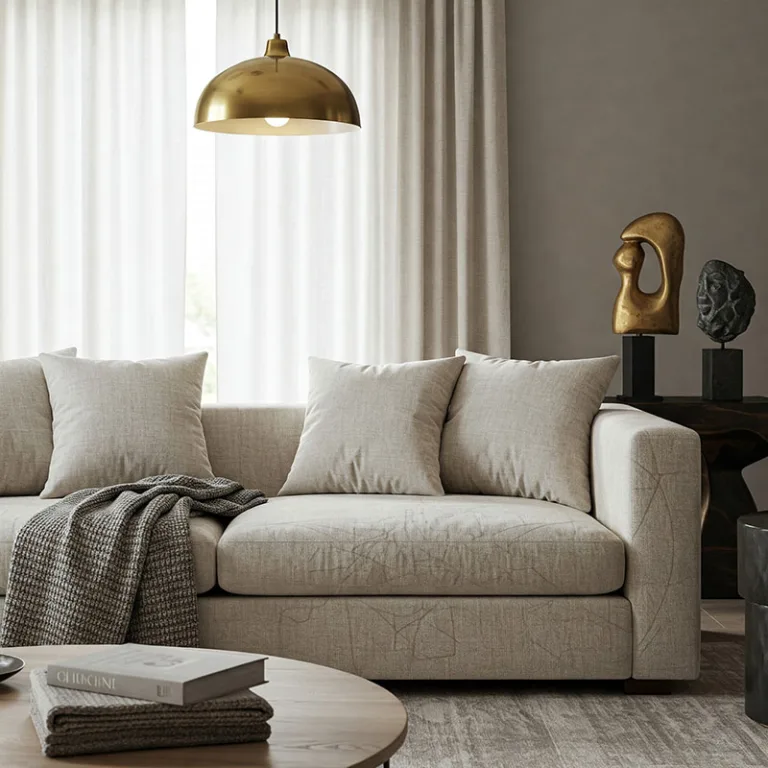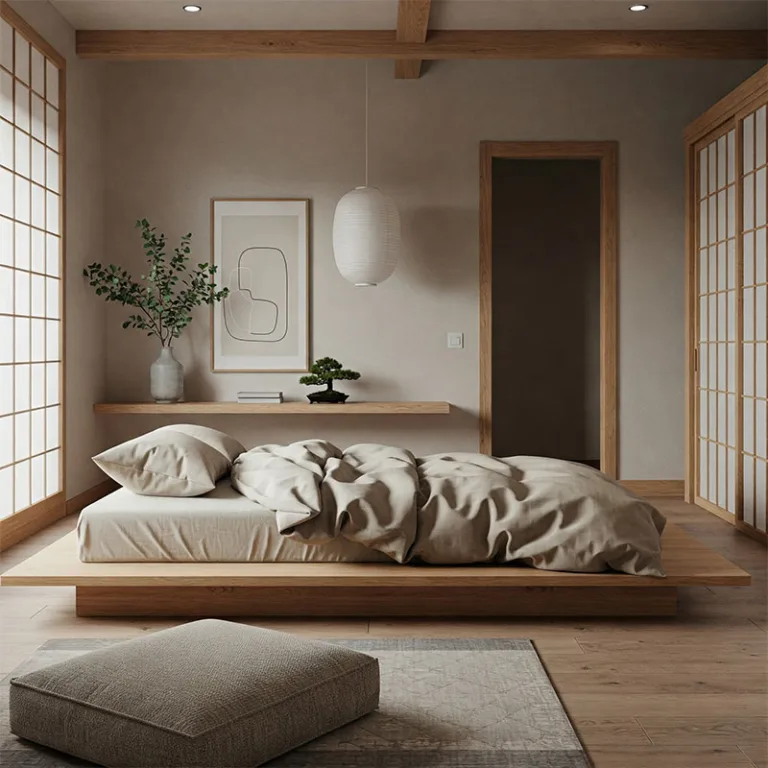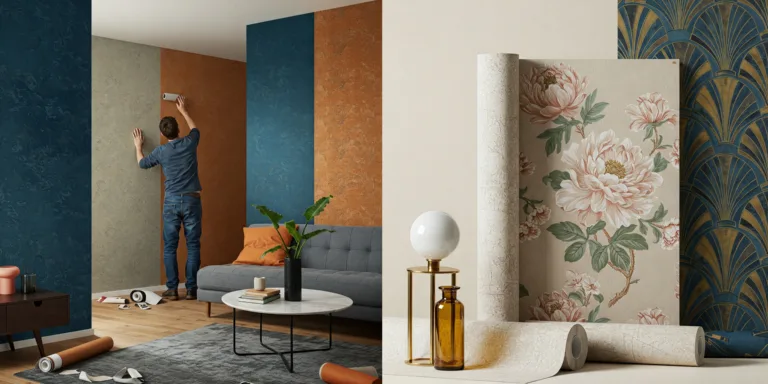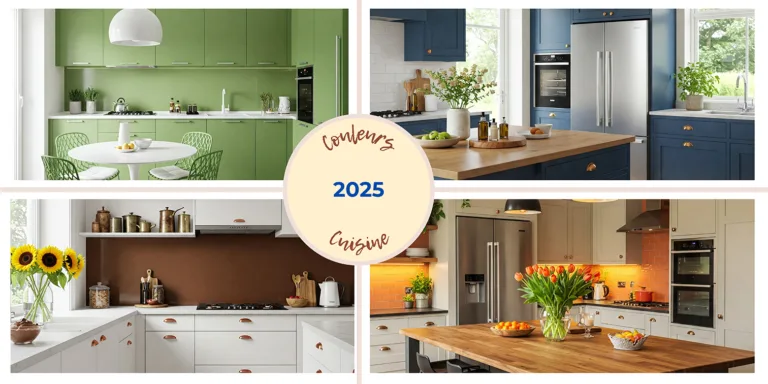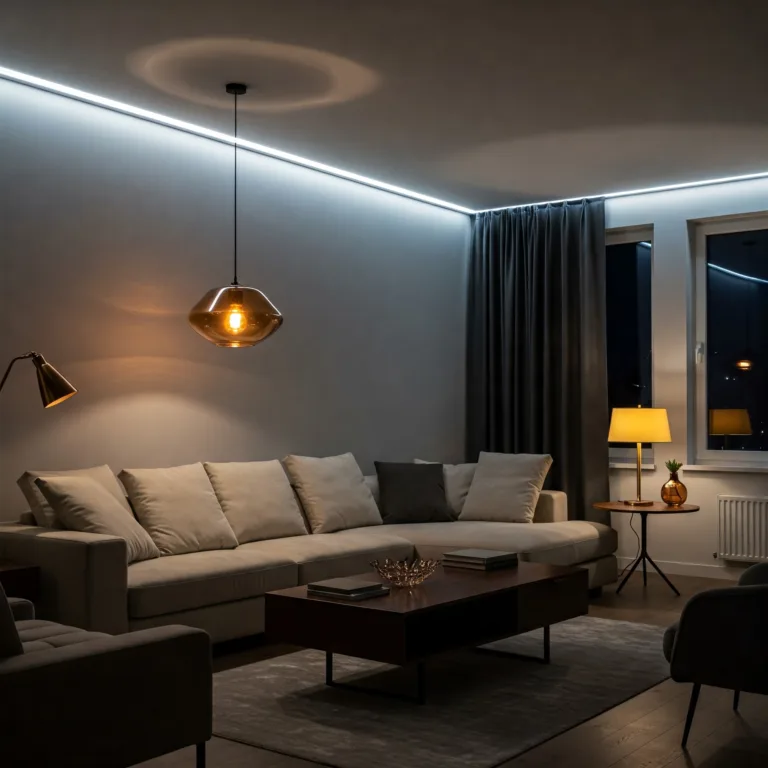The Return of Natural Materials: Stone, Linen, and Untreated Wood in Interior Design
The return of natural materials like stone, linen, and untreated wood in interior design reflects the growing trend toward authenticity, sustainability, and a connection to nature in our living spaces. These materials are being integrated in innovative ways to create modern, stylish, and eco-friendly interiors. In this article, we will explore why natural materials are back on trend, how they are being used in modern furnishings, and how you can incorporate them into your own home.
Table of Contents
Why Natural Materials are Back on Trend
1. Sustainability and Eco-Consciousness
Natural materials are experiencing a resurgence as people become more environmentally aware. There is a shift from synthetic, petrochemical-based materials to plant-based and naturally occurring alternatives. Materials like stone and wood sequester carbon rather than emit it, contributing to a healthier planet.
2. Wellness and Biophilic Design
Biophilic design aims to connect interior spaces with nature to promote well-being. Natural materials contribute to a serene environment, reducing stress and enhancing mood. Linen, stone, and untreated wood evoke a sense of warmth and authenticity that resonates with the human desire to be close to nature.
3. Durability and Timelessness
Materials like linen and stone are known for their longevity and ability to age gracefully. Unlike synthetic alternatives, which often degrade over time, these materials develop character and beauty with use. Their enduring appeal makes them a valuable investment in any home.
4. Improved Indoor Air Quality
Many natural materials, such as untreated wood and stone, do not release harmful volatile organic compounds (VOCs), making them an excellent choice for improving indoor air quality. Lime and clay plasters, often used in natural wall finishes, regulate indoor humidity and resist mold without toxic additives.
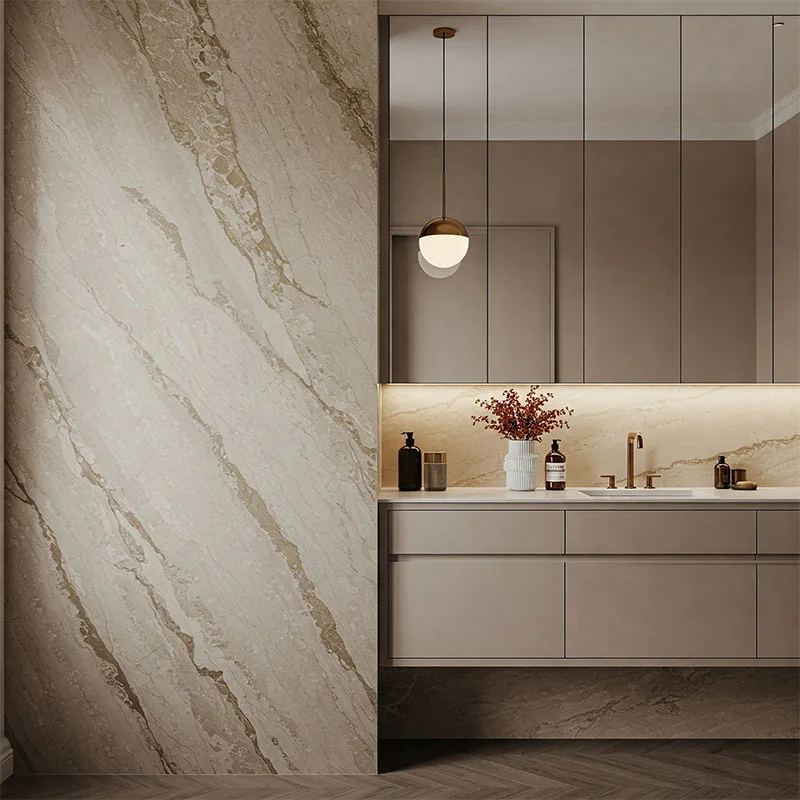
Modern and Authentic Furnishings
1. Stone in Interiors
Stone is making a comeback in interior design, particularly in warm, neutral tones. Light-transmitting quartzites and marbles create a calming atmosphere. Popular materials include Patagonia quartzite, Visone quartzite, and Traonyx White marble, which add elegance and sophistication to any space.
2. Wood and Stone Combinations
A striking trend is the combination of colored wood with vibrant natural stone. Smooth stone surfaces paired with the organic textures of wood create an inviting and harmonious design that blends tradition with contemporary aesthetics.
3. Linen in Home Decor
Linen is widely used for curtains, cushions, and sofa covers. Its natural texture, durability, and ease of care make it an excellent choice for home textiles. Linen softens with use, adding a relaxed and cozy feel to interiors.
4. Plaster Wall Finishes
Natural mineral and plaster finishes are increasingly popular for their aesthetic and performance qualities. These materials provide luminescent appearances and help regulate indoor humidity, enhancing comfort and sustainability.
5. Handcrafted Furniture
The appreciation for artisanal craftsmanship is growing, with handmade furniture crafted from natural materials gaining popularity. These pieces add warmth and uniqueness to spaces, reflecting a commitment to authenticity and quality.
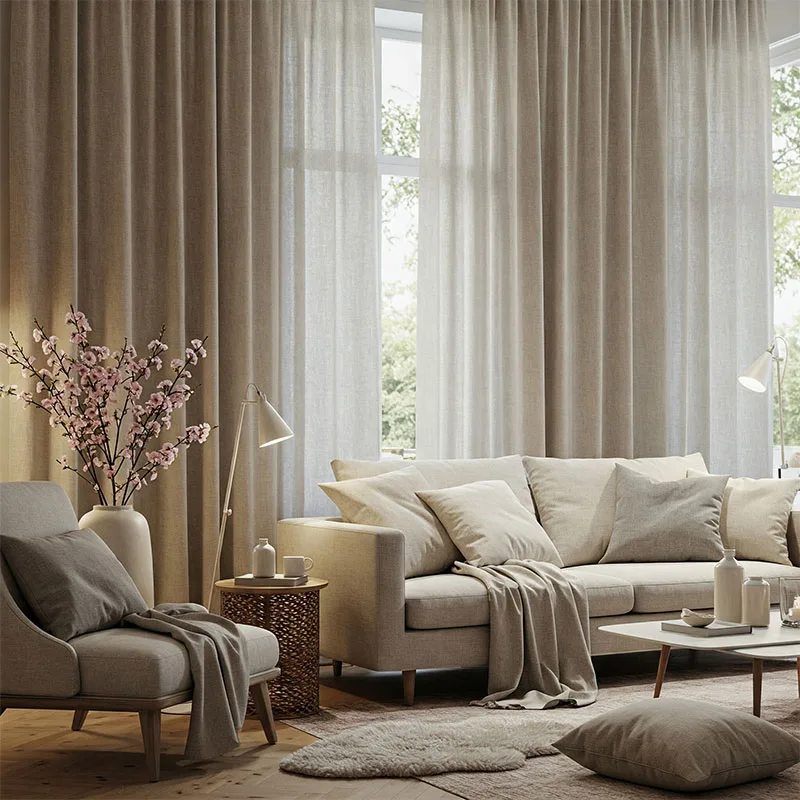
Example of Natural Materials in Interior Design
Untreated Wood
Untreated wood refers to lumber or raw wood that has not been exposed to chemical treatments, adhesives, or coatings. It retains its natural color and texture, making it a preferred choice for eco-friendly interiors. However, untreated wood requires protection from decay and insects if used in humid or outdoor environments.
Key Characteristics:
- Natural Appearance: Maintains its original grain and color.
- Easy to Work With: Simple to cut, sand, and stain.
- Safe for Indoor Use: Free from harmful chemicals.
- Environmentally Friendly: No chemical treatments involved.
- Prone to Damage: Susceptible to rot and insect infestation without protection.

Stones Used in Decoration
Different types of stone offer unique characteristics and aesthetics. Here are some of the most popular stones used in interior design:
- Granite: Durable, heat-resistant, and perfect for kitchen countertops and flooring.
- Marble: Luxurious appearance with striking veining, often used for bathrooms and accent walls.
- Quartzite: Hard and resilient, ideal for fireplaces and decorative elements.
- Slate: Non-porous and heat-resistant, commonly used for flooring and wall cladding.
- Limestone: Soft texture and elegant appeal, perfect for flooring and countertops.
- Travertine: A form of limestone with a classic look, great for bathrooms and flooring.
- Basalt: Dark, durable, and sound-absorbent, ideal for modern spaces.
- Sandstone: Porous and warm, used for wall cladding and flooring.
- Onyx: Translucent and luxurious, used for decorative elements like lamps and sculptures.
Key Characteristics of Decorative Stones in Interior and Landscape Design
- Diverse Color Palette: Decorative stones come in a wide array of colors, from earthy neutrals to bold, vibrant hues, offering endless design possibilities.
- Distinctive Patterns: Many stones exhibit unique veining, speckles, or natural formations, adding depth and character to any space.
- Varied Textures: Available in polished, smooth finishes or rugged, textured surfaces, stones enhance the overall aesthetic appeal of interiors and landscapes alike.
- Versatile Applications: Used in pathways, accent walls, water features, and garden edging, stones adapt seamlessly to different design needs.
- Natural Weed Barrier: Helps suppress weed growth while retaining soil moisture in outdoor settings.
- Exceptional Durability: Resistant to wear, weather conditions, and temperature fluctuations, making them ideal for both indoor and outdoor use.
- Range of Sizes: From fine pebbles to imposing boulders, decorative stones come in various dimensions to suit specific design elements.
- Composition Variations: Available in natural forms such as granite, marble, and slate, or as engineered alternatives, each offering unique characteristics.
- Porosity Levels: Some stones are more porous than others, influencing their suitability for moisture-prone areas or specific functional requirements.
- Low Maintenance: Many decorative stones require minimal upkeep, making them a convenient choice for long-term use.
- Weight and Stability: Heavier stones provide structural stability in outdoor applications but may require special installation techniques.
- Drainage Solutions: Certain stone types facilitate water drainage, enhancing soil health and landscape sustainability.
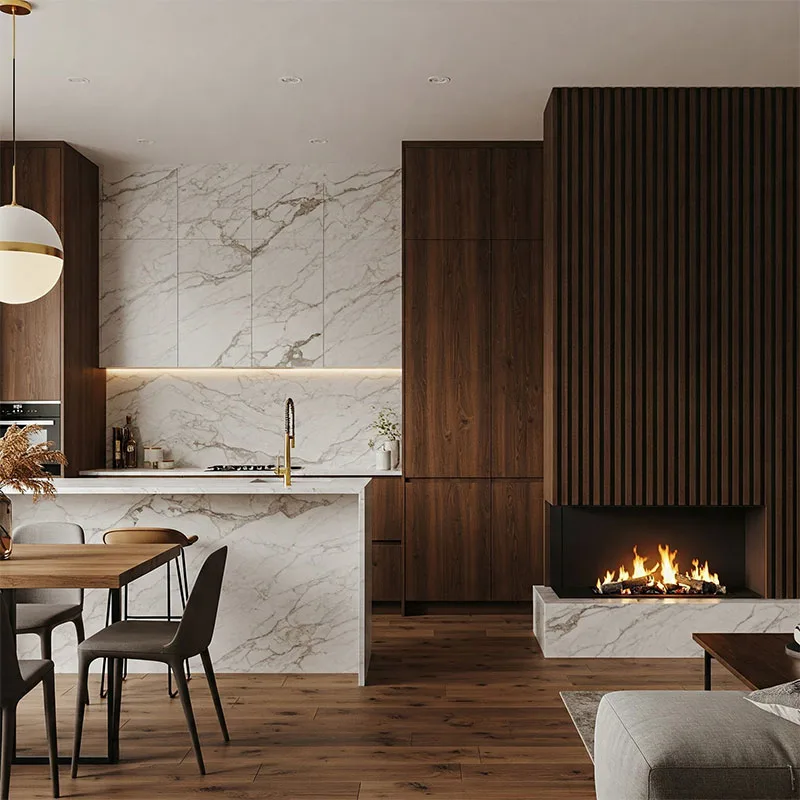
What Kind of Material is Linen?
Linen is a natural textile derived from flax fibers. It is valued for its strength, breathability, and hypoallergenic properties, making it an excellent choice for home textiles.
Key Properties:
- Strength and Durability: Three times stronger than cotton.
- Breathability: Excellent airflow and moisture-wicking properties.
- Hypoallergenic: Ideal for people with sensitive skin.
- Sustainability: Biodegradable and requires less water than cotton.
Unmissable Brands and Addresses in the United States
Several brands are leading the way in incorporating natural materials into furniture and decor:
- Thuma: Specializes in minimalist furniture made from upcycled rubberwood.
- MasayaCo: Crafts furniture from responsibly harvested FSC-certified wood with natural, low-VOC finishes.
- VivaTerra: Offers unique sustainable pieces made from reclaimed wood, recycled glass, and vintage fabrics.
- Savvy Rest: Provides furniture made from locally sourced wood with zero-VOC stains.
- GRAYN: A Vermont-based brand sourcing hardwoods within 500 miles of their solar-powered facility.
- Green Cradle: Specializes in natural, solid wood furniture, particularly for nurseries.
Conclusion
By incorporating natural materials such as stone, linen, and untreated wood into your home, you can create an authentic, sustainable, and visually appealing space. Whether through handcrafted furniture, textured fabrics, or organic wall finishes, these materials add warmth and character while promoting a healthier and more eco-conscious lifestyle.
Make sure you’re following us on social media so you don’t miss any news.

